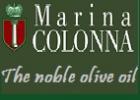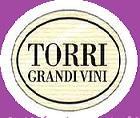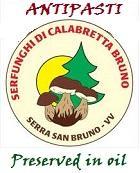'Nduja: the fiery pork paste from Spilinga.
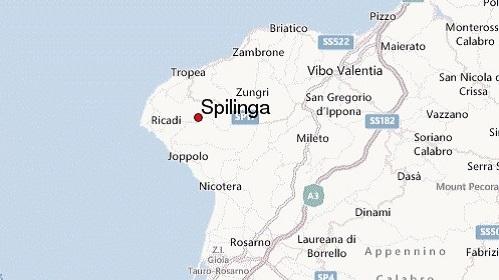 |
| The town of Spilinga is located in the Province of Vibo Valentia. |
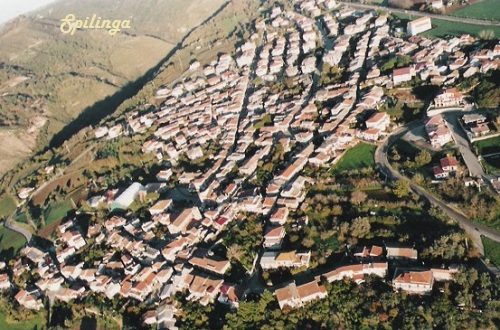 |
It may look like a common or garden sausage, but ’nduja, the fiery pork paste from Calabria, is about to tantalise taste buds across Britain. Calabrian ’nduja is something of a fugitive food – though one that is captive at last.
The chilli-spiced, spreadable pork sausage, a favourite in its homeland and used widely in Calabrian cooking, has been picked up in Britain and paraded as the greatest Italian food discovery since mozzarella. |
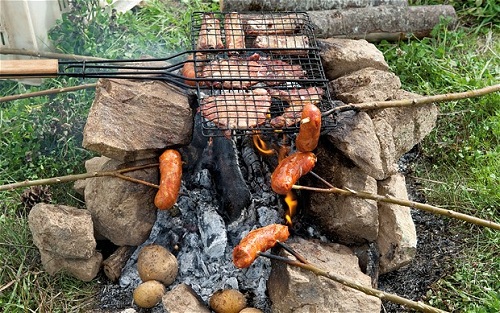 |
As a doubter of food trends, and knowing the capriciousness of their followers, it would be normal for a sceptic such as me to shrug and let this one run its course.
Yet ’nduja holds two qualifications that make it a great speciality food: a palate-invading, sensory addictiveness, and an intriguing back story.
A third attribute – good-looking packaging – it lacks. Bound up with string in a section of pork intestine, stained red with peperoncino, its appearance is frankly alarming.
But thinly spread on toasted bread, used as a base for a stew or in a pasta dish with shellfish, it spreads its rich flavour and tingling spiciness in the subtlest way right into the part of the brain that stores the best memories of food.
You will want more.
Tied up in the spirit of this food is Calabria itself, the much-colonised region that forms the toe of Italy’s boot. The name provokes thoughts of poverty and apathy; of endless rocky plains and windswept, twisted olive trees, and of a closed society that has been unable to shake off the grip of the Mafia.
But the Calabria as described in the writer Norman Douglas’s travelogue Old Calabria can now claim a renaissance.
There is a farming culture very deserving of respect; exceptional handmade foods and a new younger generation not afraid to throw open the larder doors for the rest of us to admire.
The enterprise of people such as Marco Paese, whose charcuteria factory in San Vincenzo produces DOP (protected origin) ’nduja and other cured meats, is part of the revival. His products attracted the attention of the British specialist food importer Unearthed, which has now convinced Waitrose to stock ’nduja. 'In the past we had a lot of problems that broke our economy.
The Mafia-backed politicians who were supportive of a big welfare state,’ Paese says. 'This kept the region poor, and was no help to business.’
Forests of chestnut trees conceal small-scale farms where the nero di Calabria pigs roam as good as wild – producing the buttery flavoured pork that is used in Paese’s factory.
Farmers Giacomo and Delifina Bruno keep about 50 of these magnificent beasts on their farm in San Pietro in Guarano, a village in the Cosenza province. 'Farms here are very small, no one has more than 100 pigs,’ Giacomo says.
'We allow the adult pigs to forage in the woods. In early autumn they feed only on chestnuts; the rest of the year we give them roots and vegetables.’
The pigs act as ploughs to the earth under the trees, but spearmint and marjoram also grow among the grasses, and all contribute to the wonderful flavor of the pork.
Young pigs stay with their mothers, which are given shelters to protect them at night but are allowed to roam during the day. Boars run with the sows, completing family life.
The pigs are a bossy breed, unafraid to nudge your legs and push you around as if to show off the marvels of their mountainous garden, all the time nattering in low, rumbling snorts.
In order to supply Paese at S Vincenzo and satisfy the requirements for DOP status, the pigs must reach at least 150kg in weight – suggesting a well-lived life of at least two years, and animal welfare standards that surpass most of our own in Britain.
Giacomo Bruno says his pigs are usually 220kg when they are killed. 'The meat is very lean because they forage all day,’ Paese says. 'Their diet and slow growth is ideal for curing meat because it shrinks only a little.
The meat is used in the ’nduja, and also to make pancetta, capocollo (made from a lean piece of neck meat) and sopressata, a semi-dried blood sausage.
The plant in S Vincenzo, not far from the Brunos’ farm, clings to the side of a steep hill.
Outwardly it is a dull, modern construction, but inside the typical Italian custom of applying style to industry is evident. The red and white of the tiles on the walls are matched both by the colours on the butchers’ aprons and the red of the chillies used to spice the cured meats.
'In Calabria a butcher is known as a porcara – it is the old name for the experts who would travel from farm to farm, curing the meat,’ Paese says.
’Nduja is made from the throat meat and fat. 'We chop it finely, then combine it with salt and the peperoncino, which is also grown in Calabria,’ Paese says.
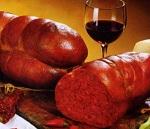 The paste is piped into natural casings then secured with hand-knotted hemp string before being hung in neat rows on a rack and taken to the curing chamber. 'The curing process begins at 25C, we call this stuffatura; it lasts 24 hours and helps dry the casing,’ Paese says.
The paste is piped into natural casings then secured with hand-knotted hemp string before being hung in neat rows on a rack and taken to the curing chamber. 'The curing process begins at 25C, we call this stuffatura; it lasts 24 hours and helps dry the casing,’ Paese says.
'We then drop the temperature to 12C for another day to complete the preserving, before leaving for several weeks to dry further.’
The low cost of ’nduja, owing to the cheap cuts used, and the extreme artisanal style of the production from the farm to the plant, was the attraction for Simon Day, who started Unearthed in 2008. 'Our brand is based on discovering affordable, regional and handmade foods for British supermarkets,’ he says.
' and the other Calabrian meats are totally authentic foods, perfect for the shops we supply.’ Unearthed also sells cured meats, cheeses, panettone and pâtés to Budgens and Booths, plus the home delivery company Abel & Cole.
After the curing process, there is one more sight that anyone who takes an interest in Calabrian food should see.
’Nduja
Having packed the back of the car with fresh and cured meats, Paese and Day set off further up the mountain for a picnic. We are driving to the Sila, the vast green and fertile plain set 4,900ft above sea level.
This is the bread basket of the region, dotted with farms that were part of the latifundia (great landed estates) until land reform in 1948.
Mucca Podolica, statuesque Calabrian cattle, graze on its pasture, grain crops grow in the fields and in late summer red fungi can be found in its woodland.
With a fire made inside a circular wall of stones, Paese’s family and some locals gather to eat. His close friend Angelo Curcio is put in charge of all the cooking.
Fresh pork is grilled over embers, followed by spicy salsiccia (sausage) and thick slices of pancetta.
A foil-wrapped parcel of potatoes with pork fat (patate mpacchiuse, or 'sticky potatoes’) bakes gently among the coals, and there is a pan of bread coils infused with ’nduja.
Cheeses, including the local juncata di capra, a goat ricotta set in small baskets; caciocavallo, a three-day old fresh cheese; and the rich burrino di vacca, a cheese with butter in its centre, are on the long table set up in the open air.
One guest plays a tarantella on a squeeze-box as if to announce the arrival of Calabrian food to the mainstream.
I predict we will all be hooked.
Article By Rose Prince. The Telegraph UK.








